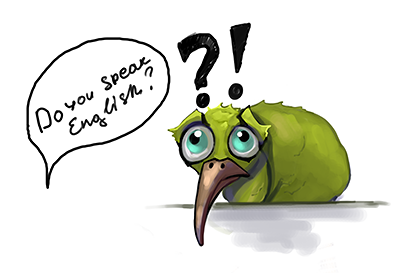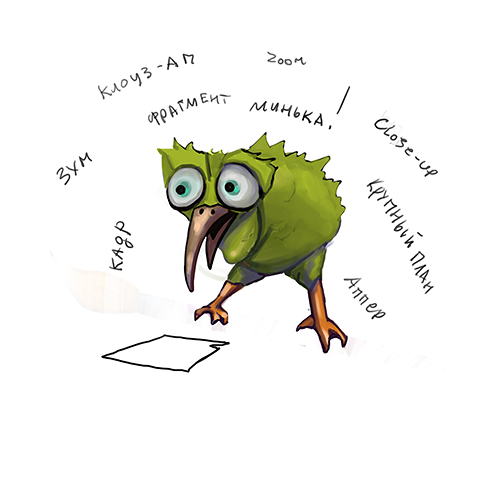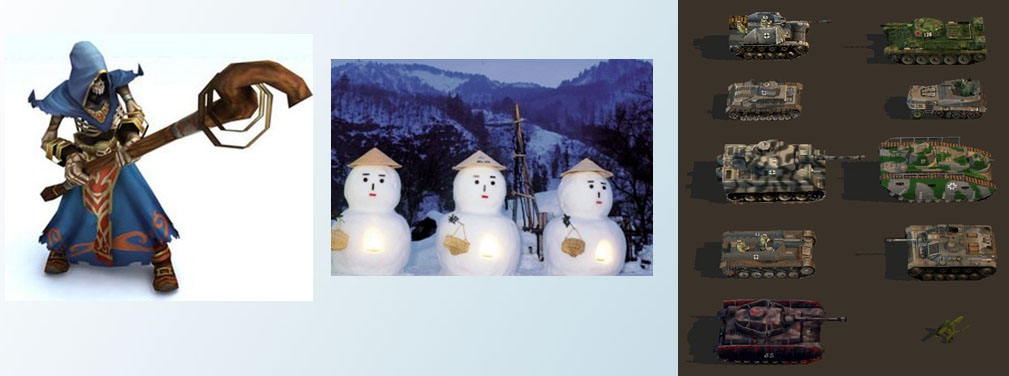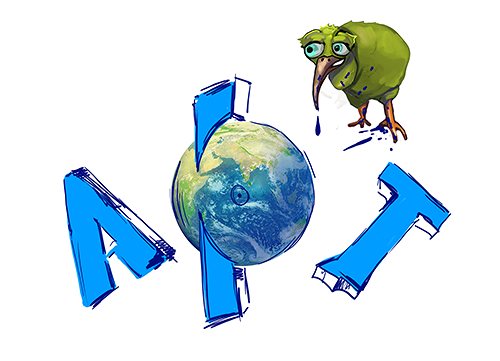Elizaveta Sokolova from N-Game Studios in the framework of DevNight Dnepr spoke about the difference in working with art customers from different regions of the world. For App2Top.ru Elizabeth has prepared a printed version of the speech.
Photo: by Sebastiaan ter Burg
Let’s start with the fact that for all the “internationality” of game art as a modern art form, there are still cultural differences and nuances that need to be taken into account in the work. On the one hand, it will help you find more and more orders from all over the world. At the same time, you will be able to avoid any mistakes, uncomfortable situations, taboo violations that may exist in a particular culture.
Do not be afraid to work with foreign customers! Many wonderful and technical artists are stopped by the “language barrier”. I believe that for an artist this should not be a problem at all. Our rule says: “in any incomprehensible situation — draw!”.
In fact, even an average level of English proficiency will be quite enough. After all, even a professional linguist who is proud of his knowledge can be stumped by such a simple fact: customers have their own language. Generally your own. In different countries, in different companies, it is customary to call the same things with completely different terms.
I will give a simple example from my own experience. Close-up, zoom, fragment, close-up, frame, minka. All these words were applied by different customers to the same graphic element of the game. And now imagine that your English-speaking colleague offers you to draw a “minka”. Knowledge of the language will not help much, you need ingenuity here. The customer will speak slang and the language of his city and his district, using the concepts and images that are accepted in his social circle.
Therefore, you definitely do not need to postpone cooperation with a foreign customer “for later” for fear that your English is not perfect. Communicating with live native speakers in a working atmosphere, you will quickly improve your level of knowledge. And, if necessary, inspired by success, you will also learn Chinese!
To better understand the specifics of working with foreign customers, let’s try to identify some characteristic differences from the local market. For example, everyone here (not being specialists) is very well versed in art and knows exactly HOW an artist should draw (“HOW” is the key word here, remember it). Now there is an unhealthy trend when some companies accept art (especially large firms sin against this) put a manager, a person who does not have an art education, does not know how to draw. The “ideal” option is if he also does not play games, and has no experience in the gaming industry. But he may have an MBA certificate, he goes to work in a suit and is generally very “efficient”. But, even in this case (and maybe that’s why), our customer focuses not so much on the “ideological” as on the “technical” side of the work. At the same time, a representative of the Anglo-Saxon civilization (Englishman, American, Australian) determines for himself the “technicality” of the artist already at the stage of acquaintance with the portfolio. If the quality of the works presented there does not suit the customer, then, most likely, you will not work with him. They will simply refuse you right away, without even going into details. We like to “give a chance” and on the one hand it can be good (a chance is a chance). On the other hand, you can spend a month (or two, three?) to try to please the customer and stay with nothing.
This is also where the difference in comments comes from. For example, working with an English customer, you draw a sketch and then start from it, clarification is underway, the costume, hairstyle of the character changes, etc. The customer is looking for “his” image and he likes that he is involved in the process. We often prefer that the artist give 16 sketches at once and choose from them what you like best (this applies to everything from characters to logos). And if the unfortunate artist did not guess the preferences of the customer, then with a high probability he will hear the verdict “you do not know how to draw.” The Anglo-Saxons have a different approach: they prefer to start from one basic sketch, gradually bringing the image to full compliance with their idea. For example, we drew characters for an Australian customer, in the process of working with whom it turned out that he does not like shoelaces and wants the characters’ clothes and boots to have buckles instead of lacing.
It’s all served exactly in this form: “I don’t like” and “I would like to.” Do you feel the difference between the English or Australian “I didn’t imagine it that way” and our “you don’t know how, not right”?
You will not receive comments on the technical part, but you may need to draw more than ten variants of the boot.
Another funny moment that sometimes occurs in the work is the incorrect use of terms by the customer. As I said, sometimes there are managers who are responsible for receiving art, but they themselves have nothing to do with it. And then there are incidents.
Once we came across a customer who wrote a comment to one of the illustrations: “The picture is not good, you need to draw a reflex.” Our artist, who received the comment, naturally drew reflexes. I detailed the art and sent it again. The next comment was: “No, this is not good at all.”
Moreover, as it often happens, the manager could not issue a technical task, it was also extremely difficult to get text descriptions or references from him. As a result of long negotiations, he sent two pictures as an example. Both depicted a battle scene, bright reflexes on the armor of warriors from magical flashes. Our artist also added a more specific color light source, made bright reflexes on the armor.
The customer’s comment after that was completely indignant: “Absolutely wrong! Is it really so difficult to do it right? We are wasting time, the artist will not be able to draw correctly. We need to look for another artist.”
This story could have ended sadly if by some miracle it hadn’t turned out that the manager on the customer’s side, who got into the gaming industry from another industry and never had anything to do with art, simply used professional terms incorrectly. The man wanted to demonstrate that he was “in the subject.” For him, “reflex” was the same magic word as “debuff”, “achievement”, “landmark”. In our case, by reflex, he meant “rondel”, i.e., part of the armor. And yes, the references sent did indeed depict rondels, but there were also bright reflexes! So the confusion in terms and self-confidence of the manager cost a lot of nerves and time spent.
We have a very developed complex — the fear that the artist will not technically cope, does not know how to do something, will not get into the style, etc. We do not know how to smile and be elementary polite. This is what sometimes turns work into some kind of assault. Then you can only throw up your hands with regret about the “brain drain”.
Question from the audience: What do you dislike most when working with domestic customers, and what is it when working with foreign ones?
Answer: With domestic customers, it is not always, but quite often it happens that you get an angry and derogatory comment on your work, which just makes your hands drop. But in fact, we are talking about some little thing that is corrected in 5 minutes. With foreigners, the opposite is more often the case. You can be told that you are a good fellow and your work turned out great. And immediately ask to correct “this, this and change it here.” You won’t have time to look back, and you already have a whole bunch of edits and wishes!
There is another important nuance that I would like to draw your attention to. It often happens that the customer builds a relationship with the contractor as follows: “I need a very large volume, deadlines for yesterday. What discount will you give me?“.
I really want customers to realize that the artist spent a lot of time and a lot of money to learn how to draw. This is his job and it should be paid. The artist’s training lasts a lifetime. Materials and art books cost a lot of money. If you want to work with a good artist, be prepared to pay well.
Well, I can advise artists, when working with customers, to immediately stipulate the financial terms of cooperation in order to avoid unpleasant incidents. In addition to the cost of your work itself, it is worth finding out the payment terms before starting work. For example, in the case of working with Asian (and many of our customers), it is better to insist on an advance. On the other hand, there are pleasant surprises. For example, we had such a case when one customer from Iceland was satisfied with the work we had done and in fact paid a larger amount than the one we had originally agreed on as a bonus. A small consolation for indie developers: sometimes even the most famous and fashionable artist can agree to draw for free, simply because he is interested. This is the freedom of creativity!
Question from the audience: What if the customer does not pay for the work performed and accepted?
Answer: Alas, most often it remains only to “understand and forgive”. Even if you work under an official contract, the costs of litigation with the customer are likely to be disproportionate to your losses. Especially if you are a freelance loner or represent a small studio, and your “abuser” has jurisdiction somewhere in the USA. The only advice in a situation when you are working with a doubtful customer: do not send him the source materials of the results of your work until you receive your money. One of the signs of unreliability is another moment: if somewhere in the middle of the work the customer begins to fiercely criticize your work (which he previously praised and accepted) this can serve as a sure sign that he has run out of money. In any case, the main thing to remember is that we can and should educate our customers! Even if it’s not a quick process.
Concluding the part of the report devoted to the organization of work with the customer, I want to note another important point. There is one undoubted plus in working with a domestic customer (in addition to the predictability of expectations and common mental values). This is nothing but a friendly attitude. For foreign customers, relationships are more often built on the principle of “nothing personal”. In the case of a domestic customer, if you work together, it will be a long-term relationship. Projects and companies in which the person with whom you have worked together may change, but he will invariably turn to you!
Separately, I would like to say thank you to those customers who write the terms of reference, clearly draw up documents and collect asset lists in a tablet. There aren’t many of these wonderful people, but they do their job superbly! And, besides, they make life much easier for us, artists.
If you decide to become an international artist, then starting work on a new project, be sure to refresh the information about the country and culture of your order. It is immediately important for yourself to understand what categorical prohibitions can be, and second of all, what preferences. This will allow you to better understand the customer and avoid unnecessary alterations in the work.
For example, when working with China, it should be remembered that the image of uncovered bones and skulls is prohibited there. Therefore, in the Chinese version of the game “Allods Online”, all skeletons and bone monsters were disguised in robes, masking their appearance.
If you are drawing art for Japan, it is unlikely that it will be appropriate to depict a panda (because of the specific relationship between Japan and China). And in Japan, for example, a snowman should have strictly two balls, a snowman of three balls is “wrong”.
In Germany, there is a strict ban on the depiction of symbols associated with the Third Reich. Even if we are talking about a documentary, historical game. For example, we once remade many textures for our project “Great Battles: Kursk Arc” (the game was released abroad under the name Frontline: Fields of Thunder). All the equipment on which historically authentic swastikas were depicted, in the German version, acquired neutral crosses.
Question from the audience: How do I find out what traditions or taboos exist in the country?
Answer: Sometimes you can get such information from the customer. But, most often you have to search on your own. The Internet and special literature come to the rescue. And it may also be useful to study the works of artists of the country with which you are going to work. You can learn a lot of interesting and useful things for yourself!
It is worth remembering that all nations have slightly different ideas about beauty. And, for example, a princess who is considered beautiful by an Indian customer, a Frenchman can only cause bewilderment.
You can check this and generally gain invaluable experience with potential (and sometimes quite real) foreign customers by posting your work on foreign art forums and galleries. If you have a lot of works, and they will differ in style and genre, then soon you will notice that the same picture on one resource is of interest to users, and on the other remains unnoticed.
When working with foreign customers, it has always been interesting for me to plunge into and understand the culture that I have to come into contact with. Find a common language, and just create cool graphics for cool games together!
Our planet is a million opportunities for creative realization, you just need to draw!








